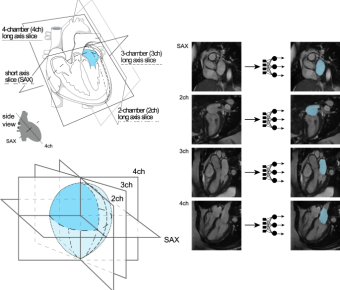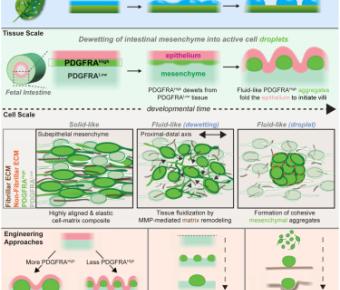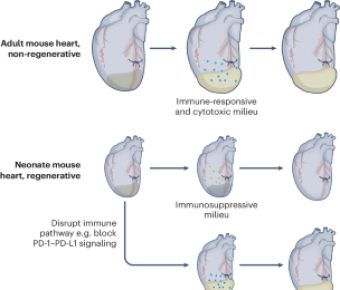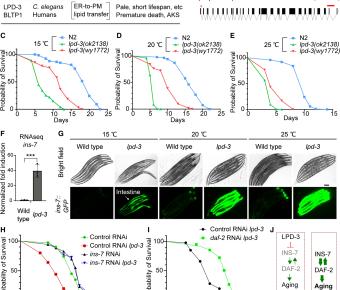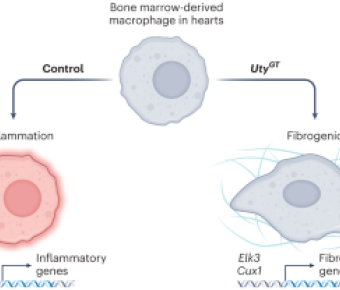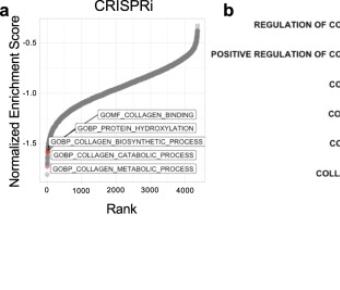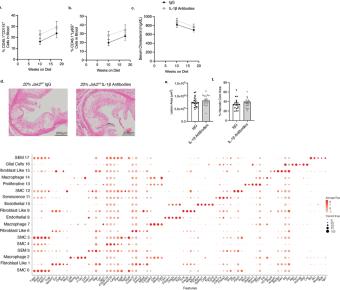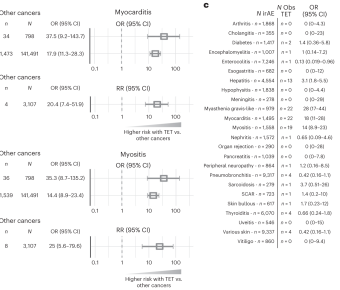Deep learning of left atrial structure and function provides link to atrial fibrillation risk
May 21, 2024
Increased left atrial volume and decreased left atrial function have long been associated with atrial fibrillation. The availability of large-scale cardiac magnetic resonance imaging data paired with genetic data provides a unique opportunity to assess the genetic contributions to left atrial... Patterning and folding of intestinal villi by active mesenchymal dewetting
May 01, 2024
Tissue folds are structural motifs critical to organ function. In the intestine, bending of a flat epithelium into a periodic pattern of folds gives rise to villi, finger-like protrusions that enable nutrient absorption. However, the molecular and mechanical processes driving villus morphogenesis ... PD-1–PD-L1 immunomodulatory pathway regulates cardiac regeneration
March 29, 2024
Adult hearts have inherently limited regenerative capabilities, such that injury results in lasting damage. The situation is different in neonatal mouse hearts, however, where a new study reveals a role for the immunomodulatory PD-1–PD-L1 pathway in regulating regeneration after injury.
Read More
LPD-3 as a megaprotein brake for aging and insulin-mTOR signaling in C. elegans
March 26, 2024
Insulin-mechanistic target of rapamycin (mTOR) signaling drives anabolic growth during organismal development; its late-life dysregulation contributes to aging and limits lifespans. Age-related regulatory mechanisms and functional consequences of insulin-mTOR remain incompletely understood. Here,... An epigenetic switch in macrophages promotes fibrosis in the failing heart.
March 01, 2024
Older men with loss of the Y chromosome are more susceptible to heart failure but the responsible genes have not been identified. A study now shows that loss of a single Y chromosome gene in bone marrow cells induces heart failure by switching cardiac macrophages from an inflammatory to a... A genome-wide CRISPR screen identifies BRD4 as a regulator of cardiomyocyte differentiation.
February 23, 2024
Human induced pluripotent stem cell (hiPSC) to cardiomyocyte (CM) differentiation has reshaped approaches to studying cardiac development and disease. In this study, we employed a genome-wide CRISPR screen in a hiPSC to CM differentiation system and reveal here that BRD4, a member of the... Genome-wide screens identify SEL1L as an intracellular rheostat controlling collagen turnover
February 20, 2024
Accumulating evidence has implicated impaired extracellular matrix (ECM) clearance as a key factor in fibrotic disease. Despite decades of research elucidating the effectors of ECM clearance, relatively little is understood regarding the upstream regulation of this process. Collagen is the most... Suppression of IL-1β promotes beneficial accumulation of fibroblast-like cells in atherosclerotic plaques in clonal hematopoiesis
January 03, 2024
Clonal hematopoiesis (CH) is an independent risk factor for atherosclerotic cardiovascular disease. Murine models of CH suggest a central role of inflammasomes and IL-1β in accelerated atherosclerosis and plaque destabilization. Here we show using single-cell RNA sequencing in human carotid plaques... Thymus alterations and susceptibility to immune checkpoint inhibitor myocarditis
January 03, 2024
Immune checkpoint inhibitors (ICI) have transformed the therapeutic landscape in oncology. However, ICI can induce uncommon life-threatening autoimmune T-cell-mediated myotoxicities, including myocarditis and myositis. The thymus plays a critical role in T cell maturation. Here we demonstrate that... An injury-responsive mmp14b enhancer is required for heart regeneration
December 09, 2023
Mammals have limited capacity for heart regeneration, whereas zebrafish have extraordinary regeneration abilities. During zebrafish heart regeneration, endothelial cells promote cardiomyocyte cell cycle reentry and myocardial repair, but the mechanisms responsible for promoting an injury... 
